 On our way to Geraldton we passed the twin towns Dongara and Port Denison. Along their coast stand 15 sheet metal silhouettes of ANZAC soldiers commemorating locals fallen in WWI.
On our way to Geraldton we passed the twin towns Dongara and Port Denison. Along their coast stand 15 sheet metal silhouettes of ANZAC soldiers commemorating locals fallen in WWI. 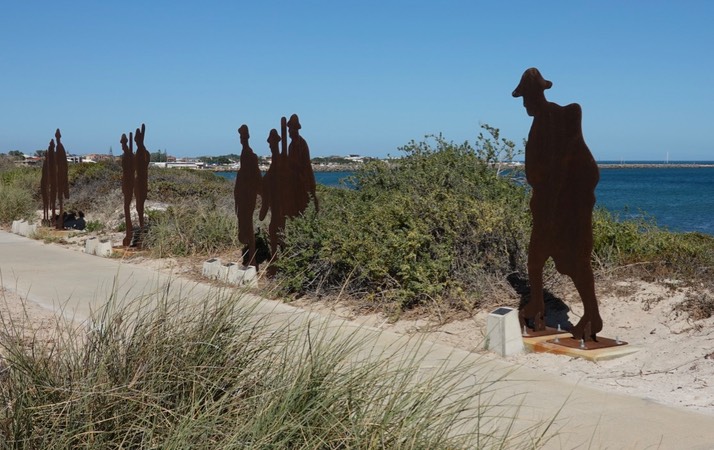
It happened to be ANZAC Day and looking across from the visitors centre, we saw a tiny house with flags raised and realised that this was the local RSL club. Around the back tables and chairs were set up and the traditional game of Two-up was in full swing! Austin purchased 2 shandies from the clubs small kitchen which served as a bar and we watched the locals playing the traditional ANZAC Day game for a while.
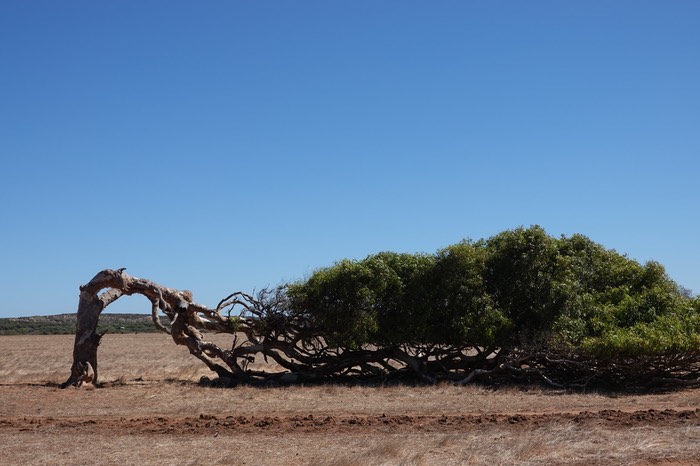
Later, as we continued our trip along the Coral Coast towards Geraldton, we truely saw the effect of the powerful westerly wind which seems to blow here every day. All the trees were bent eastwards and some of the larger ones had even been brought to their knees!
After the discovery of the wreck of the HMAS Sydney II in 2008 Geraldton has been in the national news off and on. Overlooking the city is the HMAS Memorial Presinct which was completed in 2001. A stainless steel dome features 645 seagulls. They represent the 645 crew members who were all lost when in 1941 a chance engagement with the German Raider Kormoran took place. 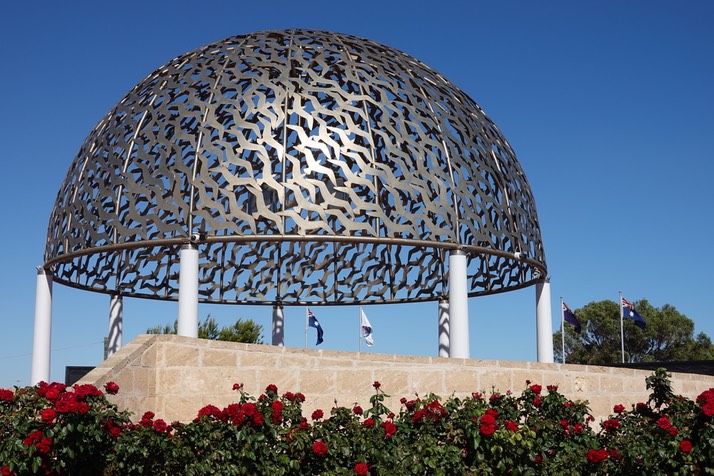
It is uncanny that the eyes of the statue, called “The Waiting Woman” erected here in 2001, gaze directly towards the coordinates where years later the ship wreck was found.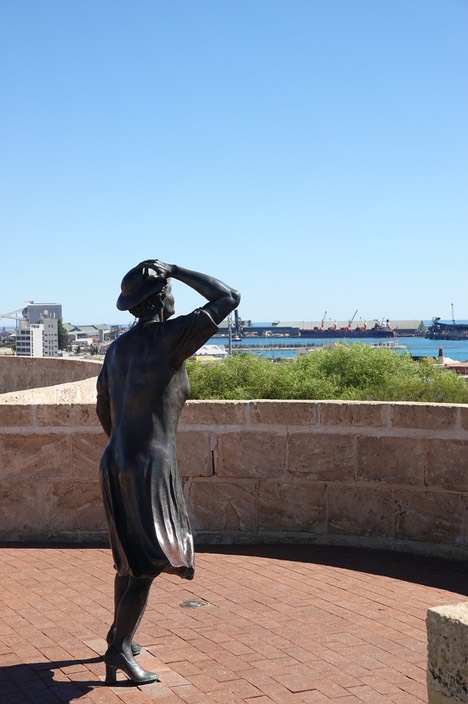
In the Geraldton Museum we watched a 3D movie of what the HMAS Sydney II was like before its demise and how she looked after her discovery, 2.5 km under the ocean surface. Eerie images and commentary of the survivors of the Kormoran tell the sad story of the encounter.
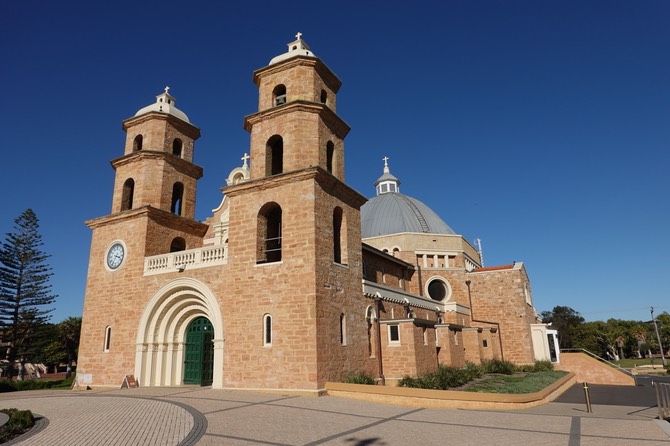
Another section of the museum is dedicated to 5 of the 52 shipwrecks recorded off the nearby Abrolhos Islands. These five are all connected to the VOC, better known as the Dutch East India Company who traded in spices, silk and tea in the early 17th to the late 18th century.
The most famous of the shipwrecks is the Batavia, named after the town Batavia on the island of Java, now called Jakarta. The story tells of a long, arduous rescue mission, mutiny and murder among the stranded people left behind, plus loss and recovery of 12 chests of silver coins.
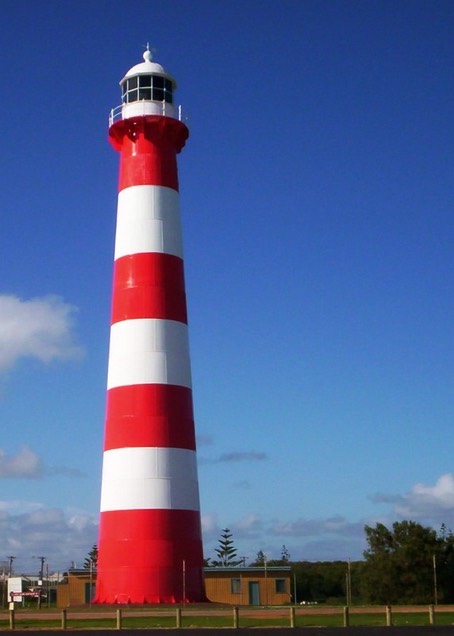
The Candy Cane Lighthouse is today an emblematic landmark of Geraldton. Built in 1878 and 60 km distant from the perilous Abrolhos Islands, it couldn’t possibly have saved the Batavia in 1729 or any of the other ship wrecks.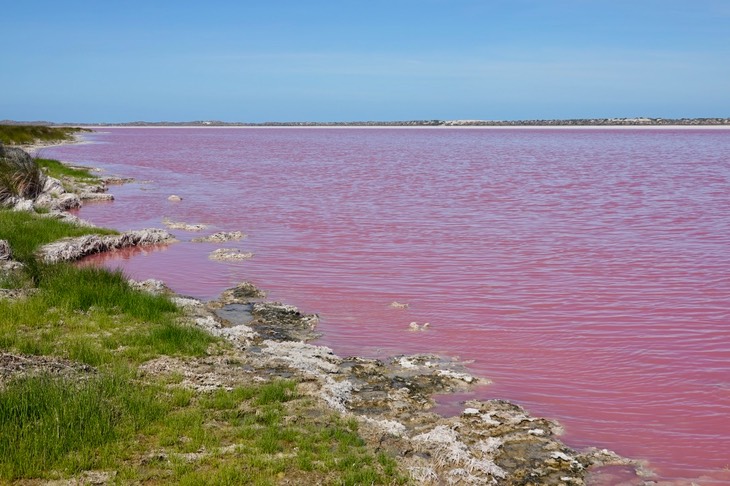
From Geraldton we took a few little dirt road detours and ended up in Gregory.
This small fishing village lies at the so-called “Pink Lake” - and pink it was! The lake obtains its pink colour from an algae bloom producing beta-carotene.
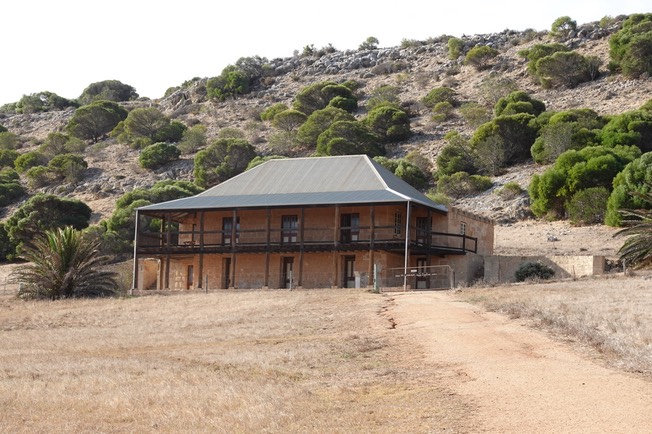
In Gregory’s neighbourhood historic "Lynton Farm” offers farm stays for campers and caravans. Visitors to the ruins of a former Convict Hiring Station and the villa of the Governor in charge, Captain Sandford, are also welcome. In the early 19th century convicts with a so-called “ticket of leave”, representing a partial pardon for good behaviour, were brought to the hiring station.
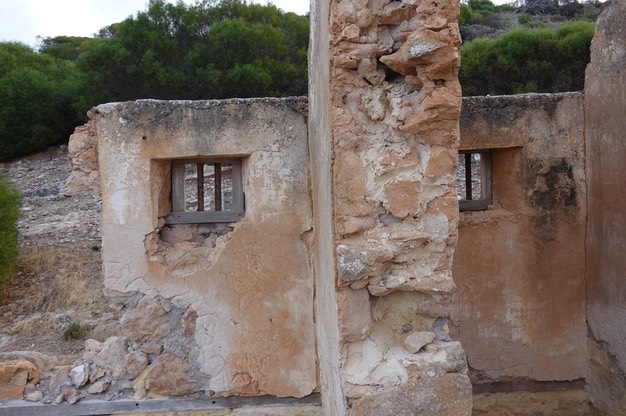 Here they were vetted and then hired out for mining, agricultural or road works. Under the promise of land grants, once they had absolved a time of duty, free settlers were employed as officers to guard these convicts. Of course, the hiring station included a lock-up for any of the prisoners who misbehaved. Today, only the odd sheep or kangaroo finds itself in its confines.
Here they were vetted and then hired out for mining, agricultural or road works. Under the promise of land grants, once they had absolved a time of duty, free settlers were employed as officers to guard these convicts. Of course, the hiring station included a lock-up for any of the prisoners who misbehaved. Today, only the odd sheep or kangaroo finds itself in its confines.